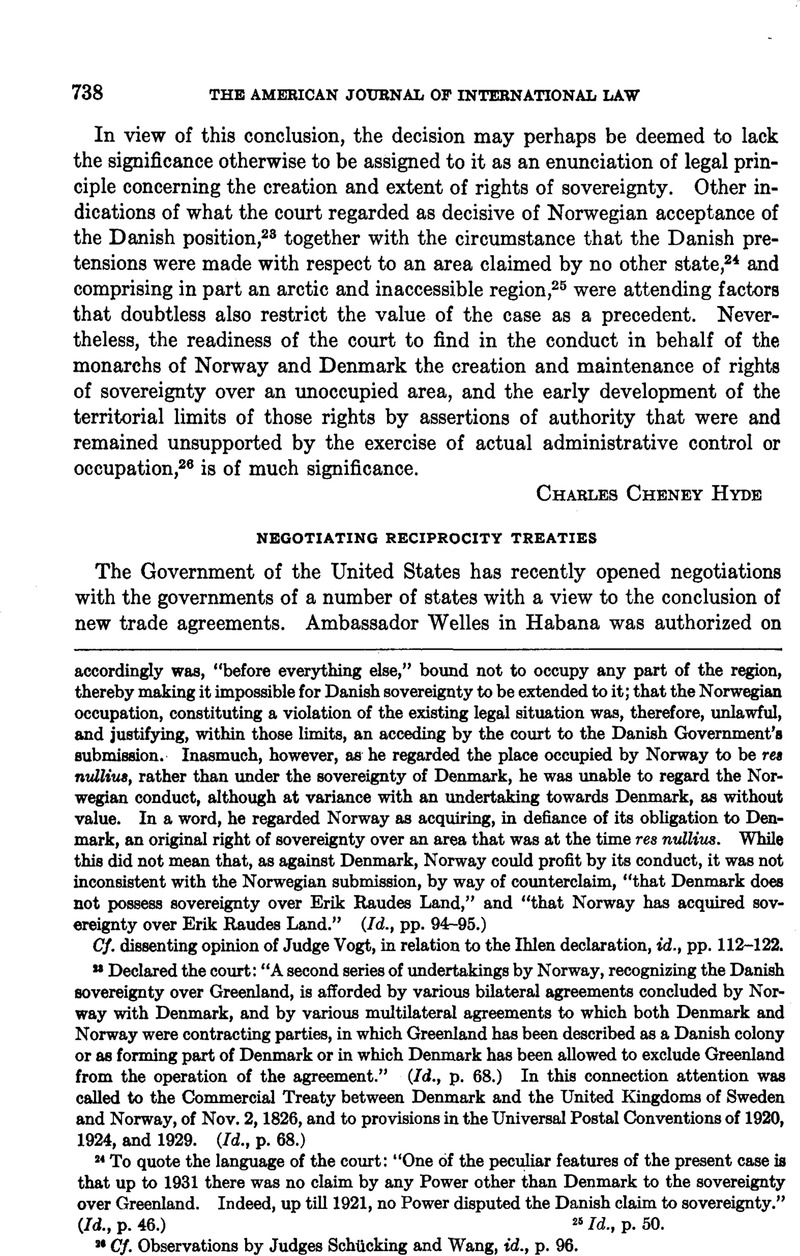Published online by Cambridge University Press: 12 April 2017

1 Department of State Press Releases, Issue No. 193, June 10, 1933, p. 434.
2 Ibid., No. 198, July 15, 1933, p. 36.
3 Ibid., No. 197, July 8, 1933, p. 18.
4 Tariff Bargaining under Most-Favored-Nation Treaties, Report to the United States Senate, No. 65, second series, printed in Sen. Doc. No. 7, 73rd Cong. 1st sess., p.3.
5 For details on these agreements, see United States Tariff Commission, Reciprocity and Commercial Treaties (1919), p. 21 ff.
6 See McClure, A New American Commercial Policy (1924), and C. C. Hyde,“ The Position of the United States on the Most-Favored-Nation Clause in Commercial Treaties” (1929), published by the American Council, Institute of Pacific Relations.
7 “ Necessary Changes in Our Commercial Policy,” Foreign Affairs, April, 1933, p. 397 at p. 402.
8 Cf. France and the Tariff Act of 1922, Publications of the Department of State, Western European Series No. 1 (1930).
9 Cmd. 4298, Denmark No. 2 (1933).
10 Cf. British Exchange of Notes with Germany April 13, 1933, Cmd. 4297, Germany No. 1 (1933).
11 See United States Tariff Commission, Effects of the Cuban Reciprocity Treaty (1929), and Philip G. Wright, The Cuban Situation and Our Treaty Relations (1931).
12 U. S. Tariff Commission, loc. tit., note 4, p. 3.
13 Executive Agreement Series No. 26.
14 League Doc. C.48.M.18. 1933. II Spec. 1.